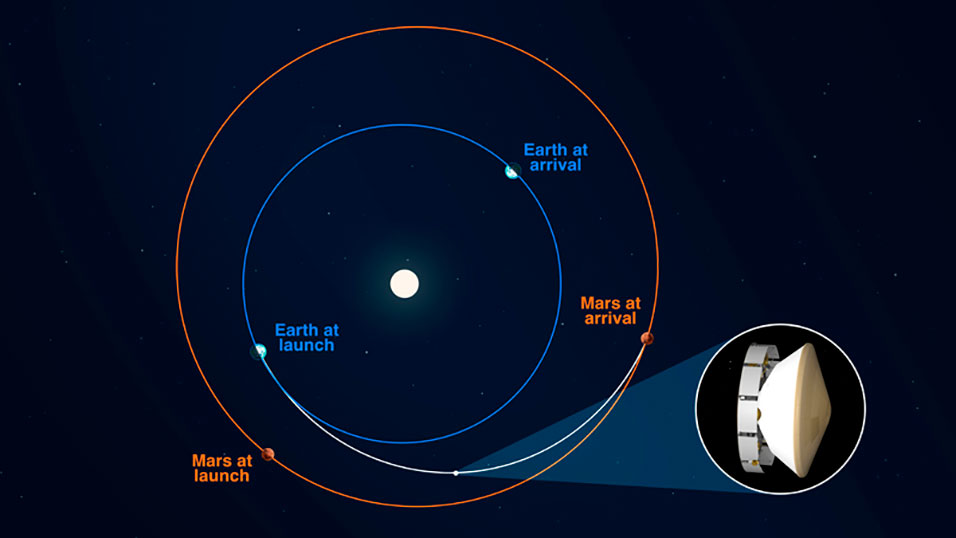PASADENA, CA.- NASA's Mars 2020 Perseverance rover mission has logged a lot of flight miles since being lofted skyward on July 30 - 146.3 million miles (235.4 million kilometers) to be exact. Turns out that is exactly the same distance it has to go before the spacecraft hits the Red Planet's atmosphere like a 11,900 mph (19,000 kph) freight train on Feb. 18, 2021.
"At 1:40 p.m. Pacific Time today, our spacecraft will have just as many miles in its metaphorical rearview mirror as it will out its metaphorical windshield," said Julie Kangas, a navigator working on the Perseverance rover mission at the Jet Propulsion Laboratory, which
Caltech manages for NASA. "While I don't think there will be cake, especially since most of us are working from home, it's still a pretty neat milestone. Next stop, Jezero Crater."
The Sun's gravitational influence plays a significant role in shaping not just spacecraft trajectories to Mars (as well as to everywhere else in the solar system), but also the relative movement of the two planets. So Perseverance's route to the Red Planet follows a curved trajectory rather than an arrow-straight path.
"Although we're halfway into the distance we need to travel to Mars, the rover is not halfway between the two worlds," Kangas explained. "In straight-line distance, Earth is 26.6 million miles [42.7 million kilometers] behind Perseverance and Mars is 17.9 million miles [28.8 million kilometers] in front."









